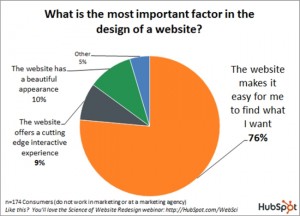B2B marketers have long measured the success of their marketing campaigns with metrics like CPM and CTR, but columnist Rachel Balik suggests we need to take a new approach.

Every week, we get an automated email from one of display ad vendors with this subject line, “Rachel, you could get more clicks by increasing your budget.” Well, you don’t say!
What bothers me about this email is that they’re not promising me better performance or a more optimized campaign. This is basically the equivalent of saying, “Rachel, you could get a second coffee by paying for a second coffee!” To extend that metaphor into my display ad campaigns, I don’t want a second coffee. I want a higher quality coffee, maybe one with an espresso shot in it. I want to be able to say to my boss, “I got the most caffeine I possibly could by using our allocated budget of $3.”
But surprisingly, most advertisers are not opposed to the idea of spending more money to get more impressions, because our entire campaign planning and measurement framework is built upon the notions of CPM (cost-per-mille) and CTR (click-through rate).
Traditionally, when marketers negotiate, plan and purchase campaigns, the CPM metric is a critical metric. But implicit in the CPM metric is the assumption that advertisers need to buy impressions by the thousands so that their ads will reach just a few potential buyers. The idea is that if you reach enough people, you’re bound to at least get a few conversions.
As has always been the case with advertising, you’ve got lots of opportunities to hit eyeballs, but no guarantees about how many will convert to buyers. Essentially, trying to reach a potential customer with display advertising is like looking for a needle in a haystack. The problem is you’re not just looking in the haystack — you have to buy the whole haystack first.
Most of us have accepted the idea that we’ll be charged for every thousand impressions, even if we only reach one (or zero) possible buyers. That’s why my ad vendor is sending me an email saying, “Spend more money, and maybe we can find you a few more targets.”
Defining The Right Metrics For B2B
We accept this mostly because it’s all we know, and it’s worked for B2C advertisers for years. They’re willing pay for thousands and even millions of impressions because even at a .07% click-through rate, they’re driving purchases and gaining customers.
For B2B advertisers, though, it doesn’t matter how many impressions were served — it matters how targeted those impressions were. In fact, that’s why click-through rate (CTR) becomes such a perplexing and frustrating metric, especially for B2B marketers. Like CPM, CTR has outlived its own relevance.
Unfortunately, while they provided us with an unprecedented level of precision, these metrics distracted us from the simple, intuitive calculation we relied on in days of yore: Is this campaign a good use of our budget? At a time when technology is turning the world on its head, it’s easy to get caught up in tactics and details that don’t support our bottom-line business goals. That frenzy of activity can sustain you for a while, but it often backfires, especially in B2B advertising.
While publishers, vendors and technologists were busy optimizing for clicks and impressions, they created a situation where advertising is a “nice to have” but rarely seen as a critical element of any marketing or sales cycle.
Know Which Half Of Your Marketing Dollars Are Wasted
For B2B companies, the selling universe is finite. If you’re evaluating whether a campaign was a good use of your budget, the first thing you need to do is discount all the impressions and clicks that come from visitors outside your selling universe. Then, you can also forget about all the clicks and impressions that didn’t result in deeper website engagement. What that translates to is actually forgetting about clicks and impressions altogether.
Instead, you want to measure whether an advertising campaign resulted in increased website engagement by visitors from accounts sales actually wants to close. That means that instead of overall engagement by individuals, you’re measuring how much you’ve moved the needle for companies that have legitimate potential to become customers.
To plan and measure a successful B2B marketing campaign, you need to measure the following data:
- What companies you’re targeting
- How many of your target companies are seeing your ads
- Whether the companies you’re targeting are increasingly engaged on your website
Connect It Back to The Website
Companies such as Google and Facebook have recognized that measuring overall lift is the most meaningful way to track an ad campaign. Both these companies have different ways of thinking about lift – but for B2B marketers, you want to be able to see if you are getting traction with a particular account that Sales is trying to sell in to. In B2B, you need to measure the overall account lift.
For most ad vendors, that’s a tougher thing to measure. It also makes campaigns harder to sell because you can’t just keep asking advertisers to feed in more money. If you’re a B2B advertiser, it’s something you need to understand before you plan a campaign so you can avoid making decisions that are driven by the wrong goals.
Some opinions expressed in this article may be those of a guest author and not necessarily Marketing Land. Staff authors are listed here.
(Some images used under license from Shutterstock.com.)
Marketing Land – Internet Marketing News, Strategies & Tips
(278)








